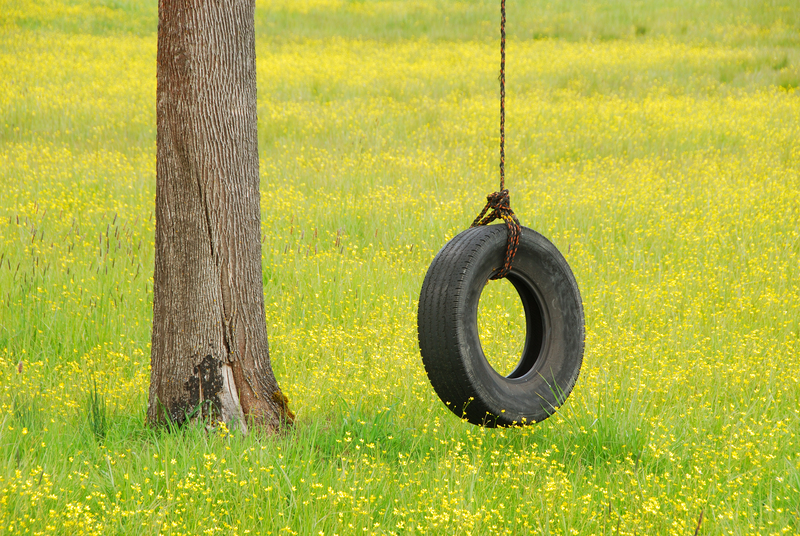Reduce Waste and Save Money with These Bulky Item Hacks
If you're like most people, bulky waste items--those large household objects from furniture to appliances--often feel like an expensive and awkward dilemma. Not only do these items take up precious space, but disposing of them improperly can contribute to landfill overflow and environmental harm. What if you could reduce waste and save money with smart bulky item hacks? This comprehensive guide will walk you through innovative, eco-friendly, and budget-friendly solutions to deal with everything from sofas to washing machines. Say goodbye to waste--and hello to sustainable savings!

What Are Bulky Items?
Bulky items encompass any large household goods that are difficult to dispose of through standard garbage collection. This category typically includes:
- Old couches and recliners
- Mattresses and bed frames
- Broken appliances (fridges, washing machines, ovens)
- Large rugs and carpets
- Lawnmowers and outdoor equipment
- Exercise equipment
Most municipal waste services charge extra for bulky waste collection--or, worse, leave households struggling to find ethical disposal methods. However, with a few clever hacks, you can reduce bulky waste and save serious money.
Why Should You Reduce Bulky Waste?
Before exploring money-saving hacks, it's essential to understand the impact of bulky waste:
- Landfill impact: Bulky household items are a major contributor to landfill mass, taking years, sometimes decades, to break down.
- Resource strain: Manufacturing, transporting, and disposing of new items consume enormous resources and energy.
- Costs add up: Most council or private bulky waste pick-ups are not free. You could be paying significant sums for removal that could be better spent elsewhere.
With these challenges in mind, let's dive into practical, actionable hacks to minimize bulky waste and maximize your wallet!
1. Repurpose or Upcycle Bulky Items
Give Old Furniture a Second Life
Often, the easiest way to reduce waste and save money is simply to reinvent what you already own.
- Paint and reupholster: Change the color or fabric on old chairs and sofas. A weekend DIY project can turn shabby furniture into a modern showpiece.
- Convert into new items: Turn a broken dresser into an entryway bench or a TV stand into toy storage. Pinterest and YouTube are packed with inspiration and step-by-step guides.
- Garden transformation: Use headboards as garden trellises, or turn unwanted drawers into outdoor planters.
- Reuse mattress springs: Springs can be crafted into hanging racks, wall art, or pot holders.
Benefits of Repurposing Bulky Items
- Zero waste--Everything stays out of the landfill.
- Personalized home decor for a fraction of the cost.
- Eco-friendly--Reduces the need for new materials.
2. Sell or Donate Your Bulky Items
Make Money and Reduce Bulk Waste
One person's trash is another's treasure. Before you pay for collection or dump fees, try these avenues:
- Online marketplaces--Facebook Marketplace, Craigslist, eBay, Freecycle, and OfferUp make it easy to sell or give away bulky items locally.
- Charity shops--Organizations like Goodwill, Habitat for Humanity, and local shelters often accept gently used furniture and appliances.
- Yard sales--Clear out your garage and make cash by hosting a neighborhood sale.
- Community "swap" events--Check for local swap days, where people exchange goods at no cost.
Keep in mind: Clean and photograph your items well to boost sales and donations.
Environmental and Financial Benefits
- Earn extra money or tax deductions by selling or gifting items.
- Burden off landfills and waste facilities.
- Supports families in need with affordable or free home furnishings.
3. Break Down and Recycle Bulky Items
Disassemble for Easy Recycling
If your item has reached the end of the line, you can still reduce bulky waste by separating recyclable parts.
- Metal frames--Beds, couches, and appliances often have steel or aluminum parts. Metal scrapyards will sometimes pay for these materials.
- Wood components--Solid wood can be chipped for mulch, or recycled into new composite products.
- Electronic waste--Fridges, ovens, and washing machines usually have electronic parts that are hazardous if dumped but valuable when recycled properly. Check with local e-waste centers.
- Textiles and foam: Upholstery, cushions, and mattress foam can sometimes be donated or recycled into insulation or carpet padding.
Pro-tip: Check your municipal recycling guidelines for details, as rules vary by area.
4. Utilize Bulky Item Pick-Up Services Wisely
Maximize Each Collection
If you can't avoid using a bulky item collection, be sure to get your money's worth:
- Bulk it together--Many councils allow several items per scheduled pick-up. Ask neighbors if they have large items too, and split the cost.
- Annual clean-out--Plan one major clean-out per year to fully use your allotted pick-up and avoid extra fees.
- Pre-sort and group--Arrange items by material (metal, wood, fabric) to make recycling easier for haulers and reduce waste processing costs.
Tip: Always check for hazardous materials (batteries, refrigerants, etc.) and remove them before setting items out.
5. Rent or Borrow Instead of Buying Bulky Items
Minimize New Bulky Waste Generation
The best way to reduce bulky item waste is to avoid generating it! Before you purchase big-ticket items, consider:
- Rental services--Tools, party equipment, outdoor furniture and even large appliances can often be rented for short-term use.
- Community sharing--Look for local lending libraries for tools and furnishings, or share with neighbors and family.
- Buy second-hand--Facebook groups, charity shops, estate sales, and marketplace apps offer quality items without the environmental impact of new manufacturing.
This not only saves you money but also keeps future waste out of the landfill.
6. Opt for Modular Furniture and Multi-Use Items
Design for Longevity and Flexibility
Modern living means adapting to rapidly changing needs. Modular designs and convertible furniture allow you to rearrange, expand, or downsize without throwing large pieces away.
- Expandable tables--Perfect for both small and large gatherings, with leaves that stow away.
- Sofa beds and futons--Combine guest and living spaces without needing extra furniture.
- Stackable storage--Bins and cabinets that combine in multiple configurations adapt as your needs do.
Investing in flexible pieces today means fewer headaches and less waste tomorrow.
7. Contact Manufacturers for Take-Back and Trade-In Programs
Sustainable Manufacturer Solutions
Many brands now offer responsible end-of-life solutions for their products:
- Appliance trade-in--Stores like Best Buy, Lowe's, and appliance brands often accept old models when you purchase new ones, sometimes offering discounts or free pick-up.
- Furniture take-back--IKEA and other big-box chains operate furniture recycling and donation schemes.
- Mattress recycling--Specialty services break down mattresses into recyclable components, sometimes at little or no charge.
Check major manufacturers or retailers when buying new for ways to ethically dispose of the old--and save money, too!
8. Organize a Community Clean-Up or Freecycle Event
Multiply Your Impact, Multiply Your Savings
Pooling resources can lead to bigger savings and less waste community-wide:
- Organize a freecycle day--Host a neighborhood event where people put out unwanted furniture, appliances, and bulky items for others to take for free. Anything left over can be arranged for bulk collection en masse, saving pick-up fees.
- Coordinate with local charities--Invite organizations to pick up unclaimed items, ensuring nothing goes to waste.
- Partner with recycling centers--Arrange for recycling collection at the same time for efficiency.
This fosters community spirit, reduces individual disposal costs, and diverts tons of material from the landfill.
9. Compost Wooden and Plant-Based Bulky Items
Green Waste to the Max
Some bulky items, like untreated wood, natural rugs, and garden trimmings, can actually decompose naturally and enrich your soil:
- Compost untreated wood--Break down old garden furniture or timber into manageable pieces and add to your compost heap (avoid painted or treated wood).
- Mulch with plant matter--Old wool rugs, coconut fiber mats, and chipped timber are great for garden beds.
- Community compost programs--Many areas now accept large loads of green waste for municipal composting.
This method is both eco-friendly and cost-effective, giving your waste new life in the garden.

Bulky Item Reduction: Frequently Asked Questions
How can I save money on bulky waste collection fees?
- Sell or donate first before paying for pick-up.
- Wait until you have several items to schedule a collection, maximizing your allotted amount.
- Split costs with neighbors for shared pick-up.
What is the most sustainable way to dispose of bulky household goods?
- Reuse, upcycle, or donate whenever possible.
- Disassemble for recycling and avoid landfill dumping.
- Leverage trade-ins or manufacturer take-back programs.
Are there items I should never put out with bulky waste?
- Hazardous or electronic waste (check local e-waste programs).
- Construction debris (contact special haulers).
- Batteries, paint, oils, and chemicals.
Final Thoughts: Embrace Smart Hacks for Bulky Item Waste Reduction
Incorporating these bulky item waste reduction hacks not only helps our environment, but also puts real dollars back in your pocket. Whether you're selling unused furniture, upcycling sofas into chic decor, or arranging efficient community pick-ups, every action counts when you reduce waste and save money. The next time you're faced with disposing of a large, awkward household item, try out these proven solutions and watch your savings (and environmental impact) grow!
Share your own hacks and experiences below--together, we can make bulky waste a thing of the past.